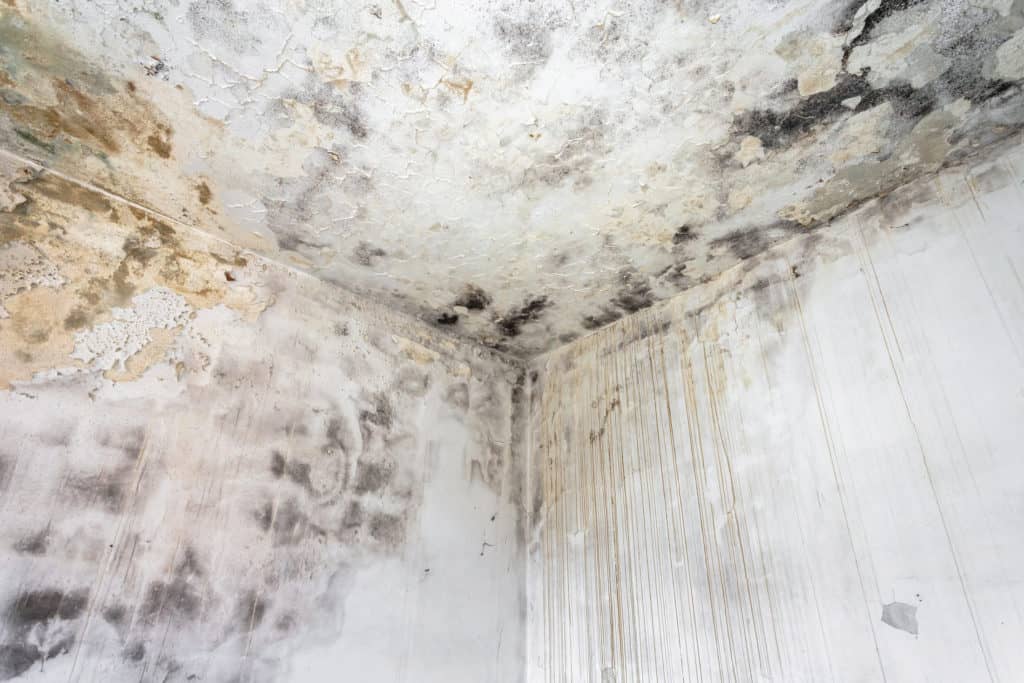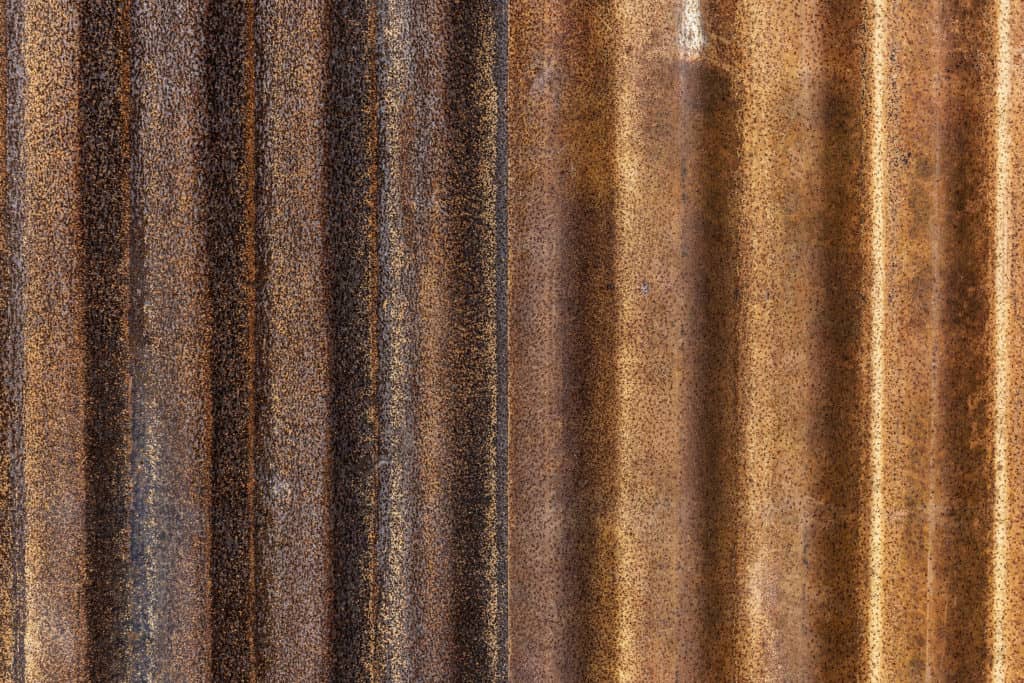If you’re looking for a new roof, there are several common types of damage that you should watch for. These include rust, surface damage, and roof leaks. Luckily, these problems don’t have to be difficult to detect. You can avoid needing a replacement by monitoring your roof for these signs.

Moisture damage
While it might seem obvious, one of the most common types of roof damage to watch for is moisture damage. It can result in several problems, from mold to decay. It also invites pests to take advantage of a weakened structure. Lastly, moisture damage can cause staining on your ceiling and walls. That’s why it’s essential to have your roof inspected regularly.
The most obvious sign of a damaged roof is water leaks. Even small spots of damage can lead to significant leaks that will cause damage to the interior of your home. If you don’t take care of a leak immediately, water may enter the home and cause mold and other moisture problems.
Another type of roof damage is structural damage. This is a severe problem if the roof supports are compromised. This can sometimes mean a costly repair or even a replacement. Fortunately, most homeowners know the common signs of moisture damage, including puffy paint and drywall.
In addition to moisture damage, another common type of roof damage is punctures. The damage caused by punctures is often preventable. One of the most common causes is improper installation and maintenance. These issues can result in a puncture in a vulnerable part of the roof, such as flashing, sealing, or underlayment. Flying debris, too, can also cause punctures.

Surface rust
Surface rust is a typical roof problem that will manifest in bubbles in the paint, as well as a loss of color and decreased lifespan. It occurs when the metal corrodes, further accelerated when exposed to environmental factors such as road salt. The rate of rusting varies depending on the metal’s composition, thickness, and environment. For example, untreated raw sheet steel exposed to the elements can rust in just a few years.
When you notice surface rust, it’s essential to take action immediately. Left untreated, it can lead to tetanus, a potentially life-threatening medical condition. Symptoms of tetanus include fever, muscle spasms, and difficulty swallowing. The rusty metal on a roof can be an entryway for tetanus bacteria. The bacteria enter the body through holes created by rusted bolts or nails.
Surface rust can lead to a lot of structural damage if left untreated. This red, flaky coating forms on iron and steel because of oxidation. When this happens, the oxidation of the metal releases a substance called rust oxide, which expands and takes up more space than the original material. Luckily, most metal roofing is protected from rust by a galvanized coating. However, heat from direct sunlight and ponding water can wear away the coating, resulting in a rusty surface.
Roof leaks
Roof leaks can be difficult to spot because of their inability to be traced. Water always flows to the lowest point of the structure, and this location can be far from the source of the leak. It can take a professional to identify and fix a leak’s cause. But even if you notice a leak on your roof, knowing what to look for can make the repair process more accessible and prevent future problems.
Roof leaks can start in any room of your home and affect various parts of the house. They are often accompanied by water spots, which may be located on the ceiling or along an exterior wall. Water spots may also indicate mold growth or rotting framing. To determine if you leak, call a local roofing expert to inspect your roof for damage.
Mold thrives in damp, dark environments and weakens building materials. Roof leaks can cause extensive damage to your home. They can even lead to mold infestation in many parts of the house.

Ice dams
Ice dams are another type of roof damage that homeowners should look for. They can cause leaking and can lead to the growth of mold. Ice dams cause damage because water finds the path of the least resistance and travels inward from the roof and wall cavities. This moisture causes ice to build up on the roof and the soffit and gutters. This can lead to mold growth and deterioration of interior and exterior wall coverings.
Ice dams can cause considerable damage to a home’s roof and attic. To prevent ice dam formation, homeowners should ensure their roofs are adequately insulated. It is recommended to hire a professional roofing contractor to inspect your roof and attic for damage caused by ice dams.
Ice dams are often challenging to detect. They usually form at the edge of the roof. While you can usually see a two-foot-high icicle or glacier on the gutter, you may not be able to see the rest of the ice dam. These sneaky ice dams tend to form in the roof pan area or on the top of a dormer.
Punctures in shingles
One of the most common roof damage to watch for is punctures in the shingles. These can result in leaks or damage to the inside of your home. Roof punctures can be caused by various things, including people walking on the roof. As a result, you should be careful not to walk on the roof, as your weight could puncture the shingles or the roof membrane. Punctures are also more likely to occur on older roofs.
Other roof damages are moss, lichens, and shingle punctures. While most punctures in shingles are easy to repair, prolonged exposure to the elements may require a complete roof replacement. In addition, extreme heat or UV damage can cause shingles to warp or buckle. Additionally, heat and UV-damaged shingles may show signs of heat blisters, which can be easily seen with a thorough inspection. Considering how much sunlight hits your roof, UV damage can be hazardous for a roof.
Broken shingles are a sign of more severe damage to your roof. Not only are they unsightly, but they also can lead to leaks. To fix these problems, you must replace the shingles with matching ones. If you’re not afraid of heights, you can do the repairs yourself if necessary.
Loss of granules on asphalt shingles
Several things can cause this damage. For example, a newly installed roof may have loose granules, or it may have been walked on or handled. Another common cause of granule loss is blistering, caused by manufacturing defects. When this happens, the shingles may be exposed to the elements, such as rain or wind, which causes the granules to fall off.
The loss of granules on an asphalt roof indicates that the shingles are beginning to wear out. The granules act as a protective barrier and help keep the shingle’s surface protected from UV rays and the weather. It is time for a new roof when they start to wear away.
Algae is a common threat to shingles in humid climates. When this happens, a black streak appears on the roof. The granules have likely lost their ability to repel algae, which can lead to rotting or even fire damage. Some asphalt shingles include copper in their granules to combat algae. However, excessive granule loss will also make a shingle roof susceptible to algae growth.
Overhanging branches
When a tree branch overhangs a home’s roof, it can cause various problems. Heavy branches can break and cause significant damage; lighter ones can scratch and even cause cracks. Furthermore, older trees can be vulnerable to decay and insects. It would be best to have a certified arborist inspect your trees to identify signs of decay. Regular tree trimming is essential to prevent these problems and protect your home.
If a tree is too close to a home, you should cut it back. Overhanging branches can cause damage to a roof, clog gutters, and ruin the aesthetics of a home. Furthermore, these branches can attract pests, eating the roof’s wood.
The weight of a falling branch can easily break a branch or a whole roof. The resulting debris will eventually deteriorate the roof’s shingles. Moreover, overhanging branches may also damage larger roofs. During high winds, heavy rain, or even snow, broken branches can cause damage to a roof.
If overhanging branches damage your roof, you should trim the branches back. In addition, you should ensure that the branches are at least five feet away from the roof. This can prevent tree squirrels from climbing onto it. During colder months, they may try to reach your home by climbing on branches.



